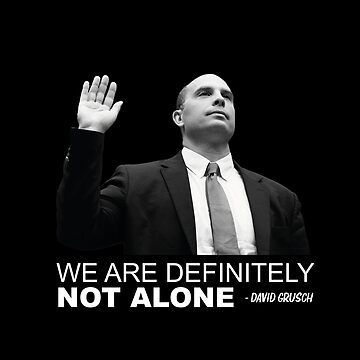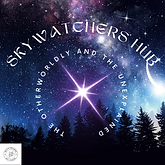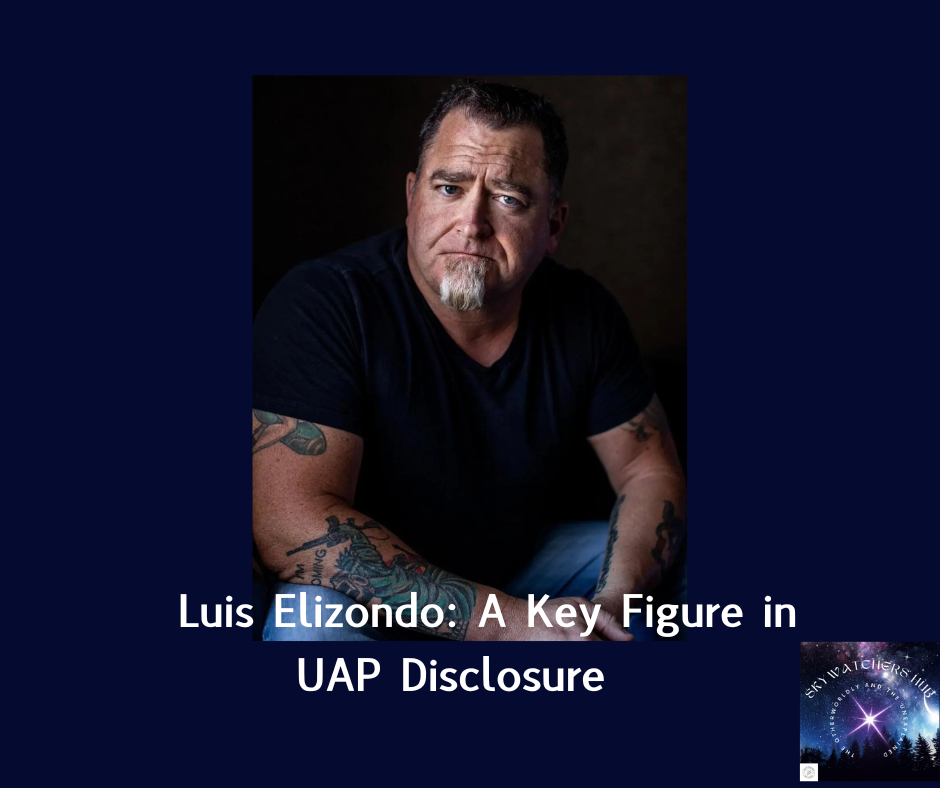David Grusch: The Whistleblower Who Took on UAP Disclosure
- Skywatcher's Hub

- Mar 1
- 5 min read
Updated: Mar 1

David Grusch: The Whistleblower Who Took on UAP Disclosure
In the ever-growing conversation surrounding UAPs (Unidentified Aerial Phenomena), few figures have been as pivotal in recent years as David Grusch. A former United States Air Force (USAF) officer and intelligence official, Grusch's shift from government insider to outspoken whistleblower has made waves in the UAP disclosure movement. His personal journey, which spans years of high-level government service, has now led him to challenge the U.S. government’s secrecy surrounding UFOs and extraterrestrial phenomena. But what motivated David Grusch to take such a bold stance, and how did his background as an intelligence official shape his role in pushing for UAP transparency?
A Career in Intelligence and the U.S. Air Force

David Grusch’s professional path is rooted in a distinguished career in U.S. military intelligence. Grusch served as an officer in the U.S. Air Force, with an extensive background in operations and national security. His responsibilities included conducting high-level analyses and overseeing the intelligence operations necessary to protect U.S. interests. This background in defense and intelligence shaped Grusch into a highly skilled and knowledgeable official, capable of understanding the most sensitive and classified matters in the national security space.
He worked as a counterintelligence officer and in special access programs (SAPs) within the Air Force, where he was involved in some of the most secretive aspects of military intelligence. Grusch’s position provided him with access to highly classified information, and it’s this exposure to national security operations that would eventually lead him to the topic of UAPs—something he had never considered before his time in government.
The Moment of Revelation

Grusch’s story took a dramatic turn when he became aware of a series of UAP-related projects and encounters during his tenure in government service. According to Grusch, while working as a senior intelligence officer, he learned that UAPs, or UFOs, were far more than the subject of conspiracy theories or classified military reports. These phenomena were real, and the U.S. government had been secretly studying them for decades.
In his role as an intelligence official, Grusch began to uncover evidence of government programs related to UAPs that were kept completely hidden from public view. This included the recovery of non-human technology, which was allegedly being analyzed in classified government facilities. Grusch claims that these projects were not just about studying unknown aerial objects but also included the reverse-engineering of technology that was potentially of extraterrestrial origin. This realization deeply troubled Grusch, especially given the level of secrecy and the apparent lack of accountability surrounding these projects.
Grusch's exposure to this information was transformative. As a man committed to transparency and the public good, he began to grapple with the ethical implications of keeping such profound knowledge from the public and from elected officials. Ultimately, he reached a breaking point where he felt that the American people had a right to know what their government was hiding.
Whistleblowing: The Path to UAP Disclosure

In 2023, Grusch made the decision to become a whistleblower, taking his knowledge of UAP programs to Congress and the public. He officially came forward as someone with direct knowledge of covert operations involving non-human intelligence and advanced aerospace technologies. In his role as a whistleblower, Grusch made several shocking claims, including:
The recovery of non-human craft: Grusch asserted that the U.S. government had recovered multiple UAPs over the years, some of which were fully intact. He claimed that these craft exhibited technology far beyond anything produced by human civilization.
Reverse engineering of extraterrestrial technology: Grusch spoke of government efforts to reverse-engineer these recovered craft to understand their propulsion and energy systems, which he described as exhibiting anti-gravity and near-accelerating speeds, far beyond known human capabilities.
The secrecy surrounding UAP programs: According to Grusch, these programs were so classified that even high-ranking government officials, including members of Congress, were unaware of their existence. The secrecy surrounding UAP research was so extreme that it not only undermined national security but also the basic principles of transparency and democratic oversight.
The dismissal and silencing of insiders: Grusch claimed that there were efforts to silence whistleblowers and people within the intelligence and defense communities who tried to speak out about UAP programs. He himself was subjected to intimidation and attempts to discredit him after he voiced his concerns internally.
Grusch’s decision to go public was not one he took lightly. As a former intelligence official, he was well aware of the risks involved in revealing sensitive, classified information. However, his desire for transparency and his belief that the public deserved to know the truth about UAPs motivated him to take this unprecedented step.
The Push for Accountability and Transparency

Since his public disclosure, Grusch has become a key figure in the ongoing battle for UAP transparency and government accountability. His testimony has had a profound impact on the discourse surrounding UAPs, bringing fresh credibility to the growing body of evidence and making it clear that UAP-related programs are not merely fringe or speculative topics but rather subjects of deep, entrenched government interest.
Grusch's calls for accountability resonate with many in the intelligence community, who feel that the government has mishandled UAP research and kept critical information hidden from the public for far too long. As a former insider with direct access to highly classified information, Grusch’s claims carry weight, and his decision to speak out has sparked a renewed debate about the need for comprehensive UAP investigations, government transparency, and public disclosure.
Grusch’s whistleblowing efforts have also fueled the push for legislative change. In response to his testimony and the growing pressure for UAP transparency, members of Congress have called for hearings and inquiries into the U.S. government’s handling of UAPs. Grusch’s claims have ignited interest in a broader examination of these phenomena, ensuring that UAP disclosure remains a prominent issue in both political and scientific arenas.
The Legacy of David Grusch

David Grusch’s role in the UAP disclosure movement is both groundbreaking and historically significant. His willingness to risk his career and reputation in order to shed light on what he believes to be a deeply entrenched government cover-up has made him a central figure in the push for transparency regarding UAPs and extraterrestrial phenomena.
Grusch's journey from intelligence official to whistleblower highlights the tension between the desire for national security and the need for public accountability. His testimony forces the issue of UAPs into the political spotlight, ensuring that the U.S. government cannot continue to avoid the topic or dismiss it as fringe or inconsequential. In an era where questions about the nature of UAPs and their implications for humanity’s understanding of the universe continue to grow, Grusch’s actions serve as a beacon for those demanding answers.
Though the road ahead may be fraught with controversy and resistance, David Grusch’s contributions have already left a lasting legacy in the world of UAP disclosure. His courage to speak out in the face of immense personal and professional risk has played a critical role in shaping the future of UAP investigations and pushing the boundaries of what we know about the phenomenon. As the conversation continues, one thing is clear: Grusch has changed the narrative, and the truth about UAPs may be closer than ever before.

.png)















Comments